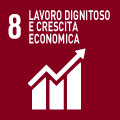- Docente: Carlotta Berti Ceroni
- Crediti formativi: 8
- SSD: SECS-P/01
- Lingua di insegnamento: Inglese
- Modalità didattica: Lezioni in presenza (totalmente o parzialmente)
- Campus: Bologna
- Corso: Laurea in Economics and Finance (cod. 8835)
-
dal 13/02/2025 al 23/05/2025
Conoscenze e abilità da conseguire
This is an introductory course in macroeconomics. The goal is to develop a relatively advanced basis for an understanding of how the national and global economies work at the aggregate level, and how production, employment, prices and interest rates are determined. We will develop the theoretical foundations to analyze the business cycle (why economic activity fluctuates), long run economic growth (why some countries are rich and other poor, why some countries are growing and other stagnating), the 2007-2008 financial crisis and subsequent deep recession as well as how fiscal, monetary, and economic policy in general affect economic activity.
Contenuti
1. Main macroeconomic aggregates. Real and financial markets.
2. Macroeconomic equilibrium in the short run.
3. The labor market. The Phillips curve. Inflation and unemployment. Macroeconomic equilibrium in the medium run.
4. The open economy. Production and the trade balance. Production, the interest rate and the exchange rate. Exchange rate regimes.
5. Financial markets and expectations. Expectations, consumption and investment. Economic policy and expectations. The government's budget constraint: public deficit and public debt.
6. Economic Growth. Savings, capital accumulation and growth. Technological progress and growth.
Testi/Bibliografia
Blanchard, O. Amighini A. e F. Giavazzi, MACROECONOMICS: A EUROPEAN PERSPECTIVE, fourth edition, Pearson Education Limited, 2021.
Exercise book: Ferraguto G. MACROECONOMICS: PROBLEMS AND QUESTIONS, Egea, last edition.
Metodi didattici
Lectures. Classes with presentation of exercises (held by the courses' tutor).
Modalità di verifica e valutazione dell'apprendimento
The final exam is written and aims at verifying the acquisition of expected learning outcomes. The exam is divided in two parts, with equal weight for evaluation. The first part proposes essay-type or multiple choice questions and true/false questions in order to verify the acquisition of specific analytical tools and language of the subject. In the second part, the student is asked to solve exercise-type questions, following typologies proposed during lectures and classes, in order to verify the ability to understand the effects of specific policy interventions and to apply general notions to specific cases.
At the end of the first and second cycle of lectures (april and june/july) partial exams are held on the material covered. Partial exams have the same structure as the final exam. For students who take partial exams, the final grade is the average of those obtained in the two partial exams.
The maximum possible score is 30 cum laude, in case all anwers are correct and complete.
The grade is graduated as follows:
<18 failed
18-23 sufficient
24-27 good
28-30 very good
30 e lode excellent
Strumenti a supporto della didattica
Teaching materials (lectures' slides, exercises presented in classes) will be published weekly on Virtuale.
Classes with presentation of exercises and examples useful for preparing the written exam. Classes will be held by the course's tutor.
Orario di ricevimento
Consulta il sito web di Carlotta Berti Ceroni
SDGs

L'insegnamento contribuisce al perseguimento degli Obiettivi di Sviluppo Sostenibile dell'Agenda 2030 dell'ONU.
